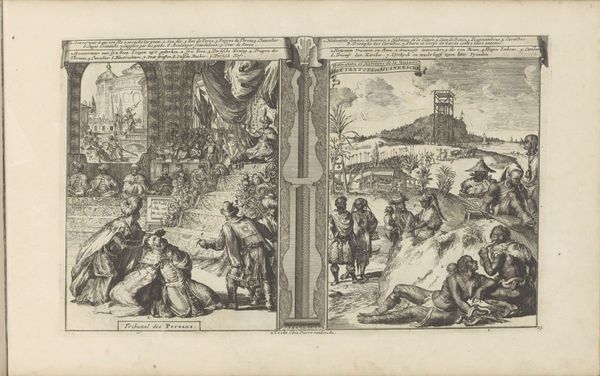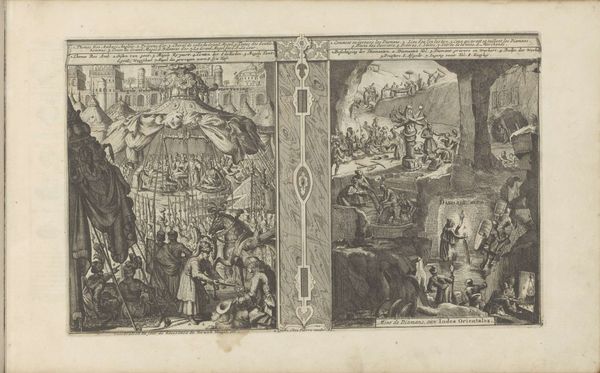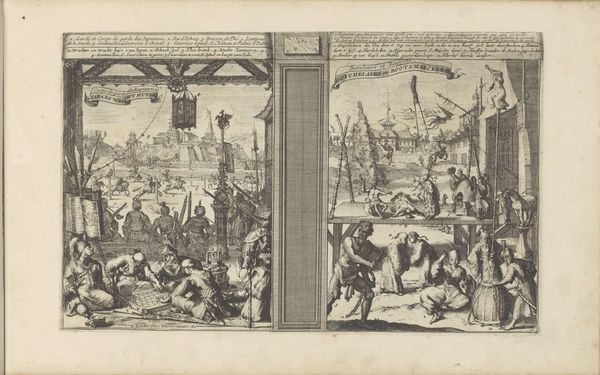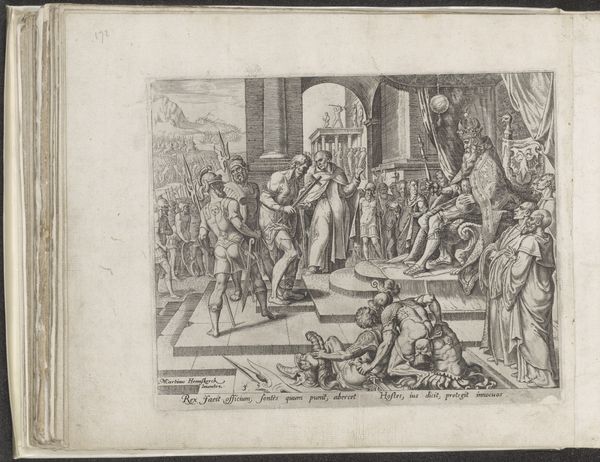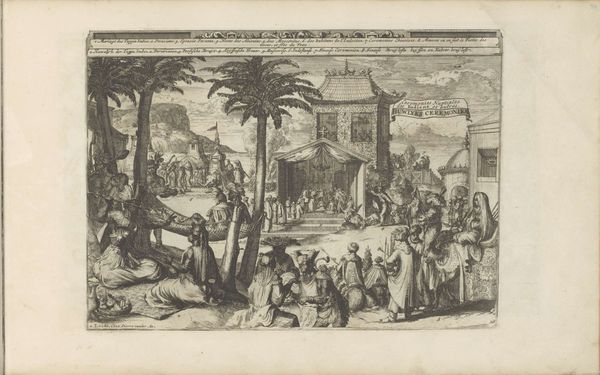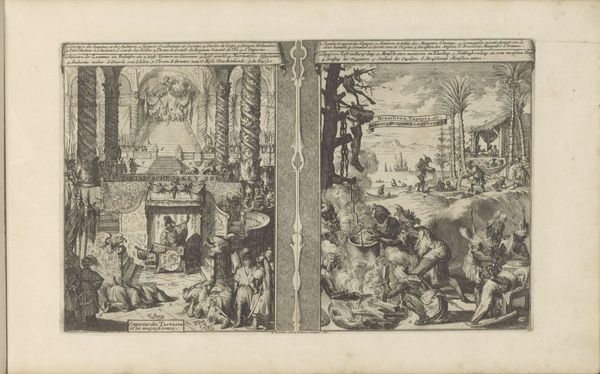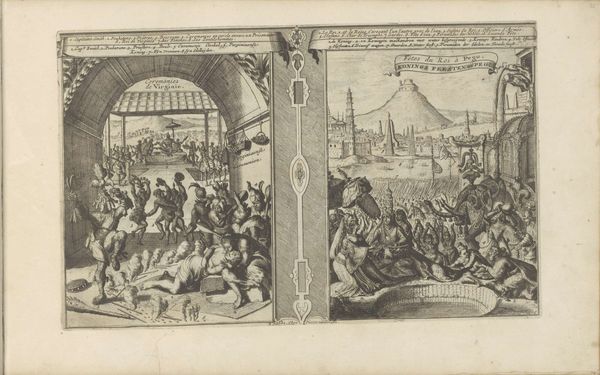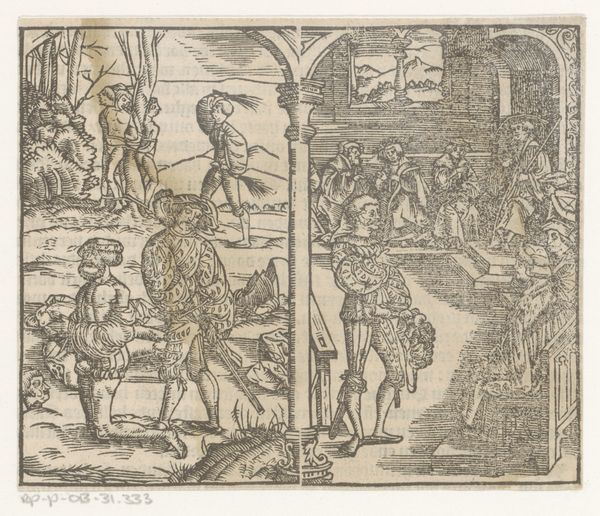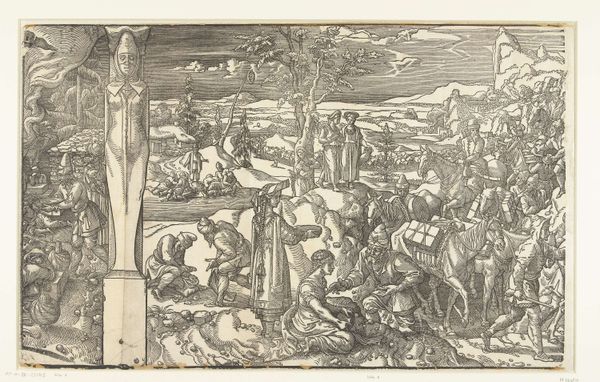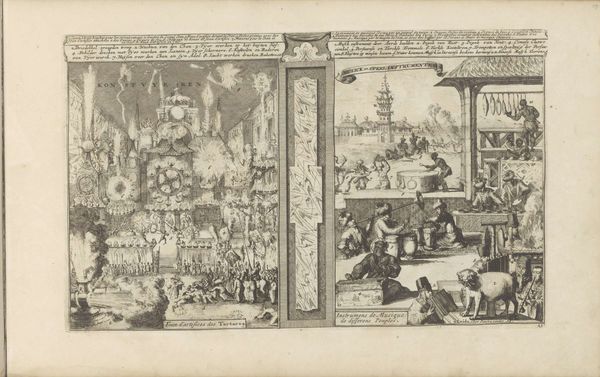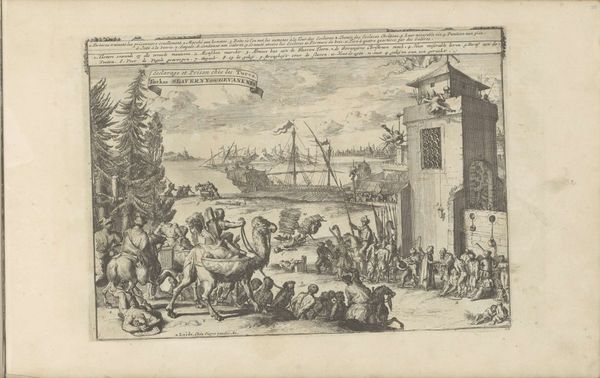
print, ink, engraving
#
baroque
# print
#
old engraving style
#
ink
#
history-painting
#
engraving
Dimensions: height 212 mm, width 339 mm
Copyright: Rijks Museum: Open Domain
Editor: At first glance, the print evokes a sense of dense, almost overwhelming activity. What's the narrative thread binding these bustling scenes together? Curator: This engraving by Romeyn de Hooghe, dating between 1682 and 1733, bears the title "Doopceremonies; Berg van Abessinië," now held in the Rijksmuseum. It presents two distinct, yet related, tableaus depicting, ostensibly, baptismal ceremonies in the Kingdom of Abyssinia or Ethiopia. Editor: The linear quality of the engraved lines—they really guide the eye. And the contrast between light and shadow emphasizes certain actions. I wonder what kind of ink the artist used to render this tonal range? Curator: Notice how de Hooghe uses a fine line to construct intricate compositions. The linear networks and their intersections produce light and shadow effects and an almost baroque-style dramatic effect. Each mark results from deliberate manual work – a point that invites us to consider the means and relations of production inherent to printmaking during this historical period. Editor: I see a very intricate scene on the left with what appears to be a Christian baptism occurring indoors, contrasting with a very regimented, outdoor scene on the right. Is it a depiction of royal or noble baptisms? Curator: Indeed. Structurally, the print functions on several visual registers simultaneously, from a landscape view to the interior spaces which suggest an architecture to an overarching historical theme. Semiotics helps us identify these signifiers. One could spend a long time just mapping the distribution of meaning on the print's surface alone. Editor: These scenes almost seem to represent the conversion of an entire community or an entire empire and therefore suggests a certain exercise of control. How interesting it is to imagine the labor involved in producing numerous copies of these scenes. Curator: Ultimately, the artist masterfully uses a limited set of materials, namely, the plate, the ink, the engraving tools, to create a work brimming with texture and symbolism, both aesthetically refined and historically suggestive. Editor: This exploration underscores the inherent labor in early printmaking and reveals the layers of representation. Thank you for helping me observe the art so diligently and mindfully.
Comments
No comments
Be the first to comment and join the conversation on the ultimate creative platform.
